Which of the following is a complex carbohydrate?
Glucose
Fructose
Starch
Sucrose


Complex carbohydrates are key to a balanced diet, providing sustained energy and essential nutrients. This guide delves into the world of complex carbs, explaining their importance in nutrition. We cover a range of sources, from whole grains to vegetables, and explain how they benefit overall health. Ideal for educators and health enthusiasts, this guide simplifies complex nutritional information, making it accessible and actionable. Learn about the role of complex carbohydrates in maintaining energy levels, supporting digestive health, and promoting long-term well-being.
Complex carbohydrates are a type of carbohydrate that has a complex sugar structure, which the body breaks down and absorbs. The energy is broken down through digestion and exercise. (see aerobic exercise and mechanical and kinetic energy).
The best example of complex carbohydrates is whole grains, like brown rice, quinoa, and whole wheat. These grains are rich in fiber, vitamins, and minerals. Unlike simple carbohydrates, which are quickly absorbed, complex carbs provide a slower, more consistent release of energy. They also aid in digestion and can help regulate blood sugar levels. For teachers, explaining the benefits of whole grains can be a practical way to educate students about making healthier food choices and understanding the importance of balanced nutrition.
Complex carbohydrates are integral to a healthy diet, offering sustained energy and essential nutrients. They are found in a variety of foods, each with unique health benefits. Teachers can use these examples to educate students about making nutritious choices. Complex carbs are not only vital for energy but also play a crucial role in digestive health. Understanding these foods helps in creating balanced meal plans and promoting overall well-being.
Complex carbohydrates are crucial for a balanced diet, offering a steady energy source and vital nutrients. They are categorized into three main types, each playing a unique role in nutrition. Understanding these types can help teachers educate students about the importance of incorporating a variety of carbohydrates into their diets for optimal health.
For teachers, explaining these types with examples like whole wheat bread (starchy), broccoli (fibrous), and garlic (functional) can simplify complex nutritional concepts for students.
Complex carbohydrates are a dietary staple, providing numerous health benefits. They are key to a balanced diet and play a significant role in the body’s overall functioning.
Educators can use these functions to teach students about the importance of complex carbohydrates in a diet, demonstrating how they support various bodily functions and overall health.
Complex carbohydrates are vital for sustained energy and overall health. Here’s why they’re important:
| Aspect | Complex Carbohydrates | Simple Carbohydrates |
|---|---|---|
| Definition | Complex carbs are polysaccharides, consisting of long chains of sugar molecules. | Simple carbs are monosaccharides or disaccharides with a simpler chemical structure. |
| Digestion and Absorption | They digest slowly, providing sustained energy. | They digest quickly, providing rapid energy. |
| Impact on Blood Sugar | They generally have a lower impact on blood sugar levels. | They can cause spikes in blood sugar levels. |
| Nutritional Value | Often high in fiber, vitamins, and minerals. | Usually lower in fiber and essential nutrients. |
| Examples | Whole grains (like brown rice), legumes (like lentils), and starchy vegetables (like sweet potatoes). | Sugary foods (like candy), white bread, and processed snacks. |
| Health Benefits | Can aid in weight management, improve digestive health, and reduce the risk of certain chronic diseases. | Limited health benefits; can provide quick energy but often lead to energy crashes. |
It is very important to know how to identify complex carbohydrates as they are one of the biggest contributors of glycogen, which will turn into fat if the body does not burn the energy. If you want to learn more about simple carbohydrates vs. complex carbohydrates and other complex carbohydrate articles, then you may click any of the links above.
Begin by identifying and outlining the supertype or overall category of the food you are trying to identify. Most simple foods like candies and juices have simple carbohydrates.
All complex carbohydrates have starch, but not all starchy food are complex carbohydrates. This means you have to determine if the food has starch as one of its key components.
Grains and other fibrous foods are examples of complex carbohydrates. Check if the food you are identifying has whole or refined grains in its makeup.
Complex glucose or sugar structure creates complex carbohydrates. Refinement or processing can break those carbohydrates down into simpler structures which will turn the complex carbohydrate into simple carbohydrates.
People have found out that there are three main types of carbohydrates that people categorize based on their source and chemical composition, properties, and reactions. Sugar is a type of carbohydrate that is the most simple form of carbohydrates, which means it is very easy to find and consume. Starch is the second type of carbohydrate, which is a product of multiple sugar molecules. People call the third type of carbohydrate fiber, which is a complex carbohydrate due to the complex sugar structure of the carbohydrates.
Four elements make up complex carbohydrates, each with its specific functions and benefits when the person digests and absorbs these carbohydrates. Starch is the first element that makes up complex carbohydrates, a person’s saliva will easily digest and break down starch into sugar for chemical energy or potential energy. Glycogen refers to the stored energy the person’s body does when it does not need to digest carbohydrates. Cellulose and chitin are specific wall-like structures that humans cannot digest but have different uses in the digestive tract.
Quinoa is often considered the healthiest complex carbohydrate due to its high protein content, essential amino acids, and rich supply of vitamins and minerals. It’s also gluten-free and highly versatile in cooking.
Complex carbohydrates are a sub-type of carbohydrates that have a complex sugar structure. It is important to know how to identify complex carbohydrates that will allow the person to prepare their daily food intake. Simple carbohydrates and complex carbohydrates are commonly found in most of our food, therefore it is important to know how to properly pace and prepare the type of food and carbohydrates we consume.

Complex carbohydrates are key to a balanced diet, providing sustained energy and essential nutrients. This guide delves into the world of complex carbs, explaining their importance in nutrition. We cover a range of sources, from whole grains to vegetables, and explain how they benefit overall health. Ideal for educators and health enthusiasts, this guide simplifies complex nutritional information, making it accessible and actionable. Learn about the role of complex carbohydrates in maintaining energy levels, supporting digestive health, and promoting long-term well-being.
Complex carbohydrates are a type of carbohydrate that has a complex sugar structure, which the body breaks down and absorbs. The energy is broken down through digestion and exercise. (see aerobic exercise and mechanical and kinetic energy).
The best example of complex carbohydrates is whole grains, like brown rice, quinoa, and whole wheat. These grains are rich in fiber, vitamins, and minerals. Unlike simple carbohydrates, which are quickly absorbed, complex carbs provide a slower, more consistent release of energy. They also aid in digestion and can help regulate blood sugar levels. For teachers, explaining the benefits of whole grains can be a practical way to educate students about making healthier food choices and understanding the importance of balanced nutrition.
Complex carbohydrates are integral to a healthy diet, offering sustained energy and essential nutrients. They are found in a variety of foods, each with unique health benefits. Teachers can use these examples to educate students about making nutritious choices. Complex carbs are not only vital for energy but also play a crucial role in digestive health. Understanding these foods helps in creating balanced meal plans and promoting overall well-being.
Whole Wheat Bread: Rich in fiber, good for digestion.
Brown Rice: Nutrient-dense, provides long-lasting energy.
Oats: High in fiber, ideal for heart health.
Quinoa: Protein-rich, contains all essential amino acids.
Barley: Good for blood sugar control.
Lentils: High in protein and fiber.
Sweet Potatoes: Rich in vitamins, good for energy.
Chickpeas: Protein and fiber-rich, versatile in use.
Beans (black, kidney, pinto): High in fiber and protein.
Peas: Good source of protein and vitamins.
Whole Grain Pasta: More nutritious than refined pasta.
Corn: High in fiber, vitamins, and minerals.
Bulgur Wheat: Quick cooking, high in nutrients.
Buckwheat: Gluten-free, good for heart health.
Rye: High in fiber, good for weight management.
Farro: Ancient grain, rich in fiber.
Sorghum: Versatile grain, gluten-free.
Wild Rice: Nutrient-rich, good for long-term energy.
Millet: High in nutrients, gluten-free.
Whole Grain Cereal: High in fiber and vitamins.
Complex carbohydrates are crucial for a balanced diet, offering a steady energy source and vital nutrients. They are categorized into three main types, each playing a unique role in nutrition. Understanding these types can help teachers educate students about the importance of incorporating a variety of carbohydrates into their diets for optimal health.
Starchy Carbohydrates: These are found in foods like potatoes, rice, and bread. Starchy carbs are a primary energy source and should form a significant part of a daily diet.
Fibrous Carbohydrates: Found in vegetables and whole grains, fibrous carbs are essential for digestive health. They aid in digestion and can help regulate blood sugar levels.
Functional Carbohydrates: These include inulin and resistant starches, found in foods like bananas and oats. They play a role in gut health and can have prebiotic effects.
For teachers, explaining these types with examples like whole wheat bread (starchy), broccoli (fibrous), and garlic (functional) can simplify complex nutritional concepts for students.
Complex carbohydrates are a dietary staple, providing numerous health benefits. They are key to a balanced diet and play a significant role in the body’s overall functioning.
Energy Supply: Complex carbs are the body’s main energy source. Foods like whole grains and starchy vegetables release glucose slowly, providing sustained energy.
Digestive Health: High in dietary fiber, complex carbohydrates like oats and legumes improve digestive health, preventing constipation and promoting gut health.
Blood Sugar Regulation: The slow digestion of complex carbs helps in maintaining stable blood sugar levels, making them ideal for diabetes management.
Weight Management: Due to their high fiber content, complex carbs in foods like brown rice and quinoa promote a feeling of fullness, aiding in weight control.
Cholesterol Management: Complex carbohydrates, especially those in fibrous foods, can help lower bad cholesterol levels, contributing to heart health.
Educators can use these functions to teach students about the importance of complex carbohydrates in a diet, demonstrating how they support various bodily functions and overall health.
Complex carbohydrates are vital for sustained energy and overall health. Here’s why they’re important:
Steady Energy Release: Complex carbs provide long-lasting energy, preventing spikes in blood sugar.
Dietary Fiber: They are high in fiber, promoting digestive health and regularity.
Nutrient-Rich: These carbs are packed with essential vitamins and minerals.
Weight Management: Their high fiber content can help in feeling full, aiding in weight control.
Blood Sugar Regulation: Complex carbohydrates help in maintaining stable blood sugar levels.
Heart Health: Fiber in complex carbs can lower cholesterol, benefiting heart health.
Varied Sources: Found in foods like whole grains, legumes, and starchy vegetables.
Aspect | Complex Carbohydrates | Simple Carbohydrates |
|---|---|---|
Definition | Complex carbs are polysaccharides, consisting of long chains of sugar molecules. | Simple carbs are monosaccharides or disaccharides with a simpler chemical structure. |
Digestion and Absorption | They digest slowly, providing sustained energy. | They digest quickly, providing rapid energy. |
Impact on Blood Sugar | They generally have a lower impact on blood sugar levels. | They can cause spikes in blood sugar levels. |
Nutritional Value | Often high in fiber, vitamins, and minerals. | Usually lower in fiber and essential nutrients. |
Examples | Whole grains (like brown rice), legumes (like lentils), and starchy vegetables (like sweet potatoes). | Sugary foods (like candy), white bread, and processed snacks. |
Health Benefits | Can aid in weight management, improve digestive health, and reduce the risk of certain chronic diseases. | Limited health benefits; can provide quick energy but often lead to energy crashes. |

hbhsrowing.org.nz
Details
File Format
Size: 72 KB

onlinelibrary.wiley.com
Details
File Format
Size: 73 KB

ttngmai.files.wordpress.com
Details
File Format
Size: 94 KB
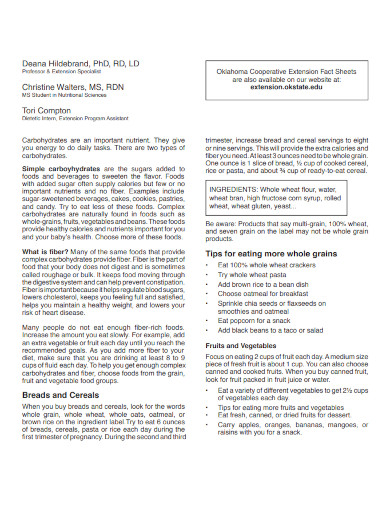
extension.okstate.edu
Details
File Format
Size: 90 KB
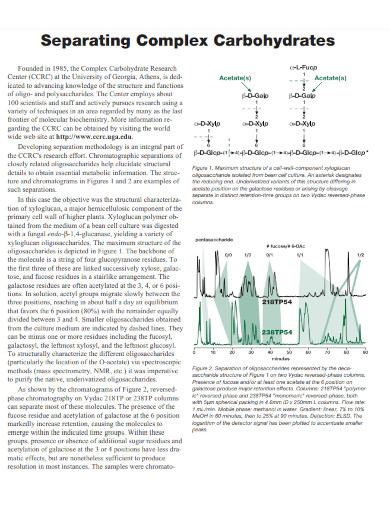
nestgrp.com
Details
File Format
Size: 95 KB
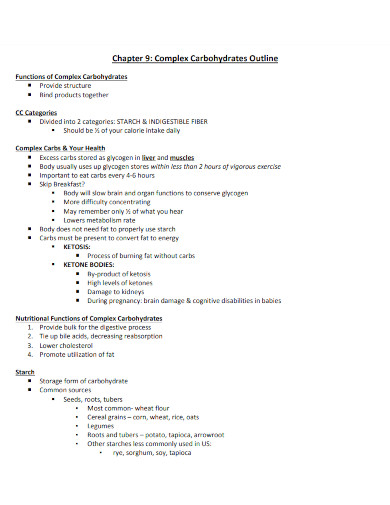
lamoehr.weebly.com
Details
File Format
Size: 46 KB
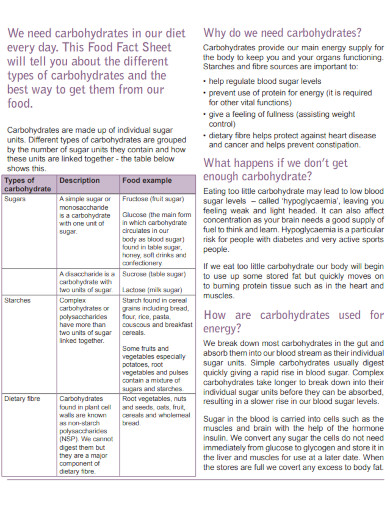 bfwh.nhs.uk
bfwh.nhs.uk
Details
File Format
Size: 108 KB
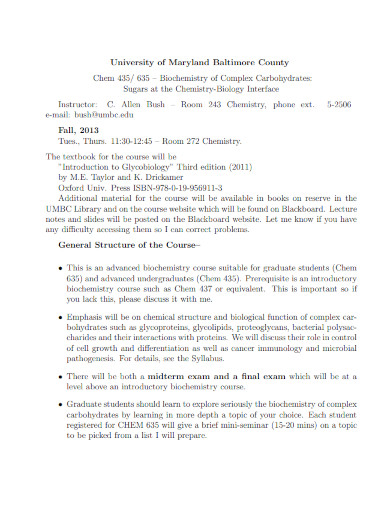
userpages.umbc.edu
Details
File Format
Size: 66 KB
It is very important to know how to identify complex carbohydrates as they are one of the biggest contributors of glycogen, which will turn into fat if the body does not burn the energy. If you want to learn more about simple carbohydrates vs. complex carbohydrates and other complex carbohydrate articles, then you may click any of the links above.
Begin by identifying and outlining the supertype or overall category of the food you are trying to identify. Most simple foods like candies and juices have simple carbohydrates.
All complex carbohydrates have starch, but not all starchy food are complex carbohydrates. This means you have to determine if the food has starch as one of its key components.
Grains and other fibrous foods are examples of complex carbohydrates. Check if the food you are identifying has whole or refined grains in its makeup.
Complex glucose or sugar structure creates complex carbohydrates. Refinement or processing can break those carbohydrates down into simpler structures which will turn the complex carbohydrate into simple carbohydrates.
People have found out that there are three main types of carbohydrates that people categorize based on their source and chemical composition, properties, and reactions. Sugar is a type of carbohydrate that is the most simple form of carbohydrates, which means it is very easy to find and consume. Starch is the second type of carbohydrate, which is a product of multiple sugar molecules. People call the third type of carbohydrate fiber, which is a complex carbohydrate due to the complex sugar structure of the carbohydrates.
Four elements make up complex carbohydrates, each with its specific functions and benefits when the person digests and absorbs these carbohydrates. Starch is the first element that makes up complex carbohydrates, a person’s saliva will easily digest and break down starch into sugar for chemical energy or potential energy. Glycogen refers to the stored energy the person’s body does when it does not need to digest carbohydrates. Cellulose and chitin are specific wall-like structures that humans cannot digest but have different uses in the digestive tract.
Quinoa is often considered the healthiest complex carbohydrate due to its high protein content, essential amino acids, and rich supply of vitamins and minerals. It’s also gluten-free and highly versatile in cooking.
Complex carbohydrates are a sub-type of carbohydrates that have a complex sugar structure. It is important to know how to identify complex carbohydrates that will allow the person to prepare their daily food intake. Simple carbohydrates and complex carbohydrates are commonly found in most of our food, therefore it is important to know how to properly pace and prepare the type of food and carbohydrates we consume.
Text prompt
Add Tone
10 Examples of Public speaking
20 Examples of Gas lighting
Which of the following is a complex carbohydrate?
Glucose
Fructose
Starch
Sucrose
Complex carbohydrates are also known as:
Polysaccharides
Simple sugars
Disaccharides
Monosaccharides
Which of the following foods is rich in complex carbohydrates?
White sugar
Honey
Brown rice
Maple syrup
The main role of complex carbohydrates in the diet is to:
Provide quick energy
Supply vitamins and minerals
Provide sustained energy
Act as a catalyst in chemical reactions
Which of the following is NOT a source of complex carbohydrates?
Oats
Apples
Potatoes
Beans
Which of these is a health benefit of consuming complex carbohydrates?
Increased blood sugar spikes
Improved digestion due to fiber content
Higher risk of tooth decay
Reduced nutrient absorption
Dietary fiber is a type of:
Protein
Simple carbohydrate
Complex carbohydrate
Fat
Which of the following complex carbohydrates is stored in the liver and muscles for energy?
Cellulose
Glycogen
Starch
Chitin
How do complex carbohydrates affect blood sugar levels compared to simple carbohydrates?
They cause rapid spikes in blood sugar.
They do not affect blood sugar levels.
They are broken down slowly, leading to gradual increases in blood sugar.
They decrease blood sugar levels.
Which of these foods is high in dietary fiber?
White bread
Oatmeal
Ice cream
Chicken breast
Before you leave, take our quick quiz to enhance your learning!

